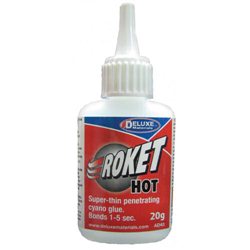Static grass puffer bottles work by manually charging model grass fibres with static electricity. When the charged...
No products
Product successfully added to your shopping cart
There are 0 items in your cart. There is 1 item in your cart.
Search Tips
How many types of glues do I need for scale modelling?
For model railways and other types of scale modelling, there are several types of glues that are commonly used, and the number you'll need can vary depending on the materials and techniques involved in your projects. Here are some of the main types of glues used in scale modelling and the typical number you might want to have on hand:
1. Cyanoacrylate (CA) glue - Also known as super glue. This is a very versatile glue that can bond a wide range of materials quickly. You'll likely want to have at least 2-3 different viscosities (thin, medium, thick) for different applications.
2. White glue/PVA - A water-based glue that is great for bonding paper, card, and other porous materials. One or two bottles of this are usually sufficient.
3. Epoxy - A two-part adhesive that forms a very strong and durable bond, especially for joining metal, resin, and other non-porous materials. You'll want at least one set of a standard 5-minute or 30-minute epoxy.
4. Contact cement - Useful for bonding smooth surfaces like plastic and metal. A single tube or tin is often enough.
5. Specialty glues:
- Plastic cement/solvent glue - For bonding plastic model parts together. You may want a couple of different applicators.
- CA debonder/accelerator - Helpful for controlling CA glue curing times.
- Wood glue - For projects involving wooden components.
Depending on the complexity of your scale modelling projects, you may only need 4-5 core glue types. But for more advanced modellers who work with a wide range of materials, having 8-10 different glue products on hand can be very useful. The key is to experiment and find the right adhesives for the specific techniques and materials in your scale modelling work.
Click here to receive the tips weekly in your mailbox. You can unsubscribe at any time.










